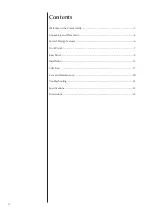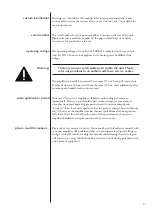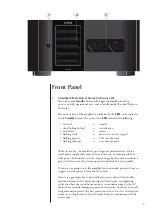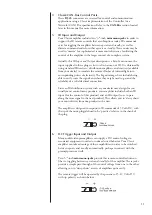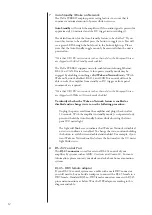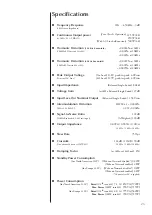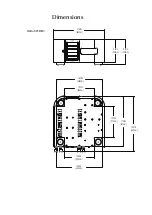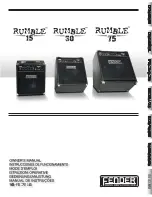
13
RJ-45 DB9
Pin-1 = DSR
Pin-1 = N/C
Pin-2 = DTR
Pin-2 = RXD
Pin-3 = CTS
Pin-3 = TXD
Pin-4 = GND
Pin-4 = DTR
Pin-5 = RXD
Pin-5 = GND
Pin-6 = TXD
Pin-6 = DSR
Pin-7 = N/C
Pin-7 = N/C
Pin-8 = Power Input
Pin-8 = CTS
Pin-9 = Power Input
Remarks: The Cat 5 cable that plugs into this adaptor and then into the
rear panel RJ-45 port must use pin-to-pin wiring (pin one to pin one, two
to two and so on).
9
USB Port
The USB connector is used to host a USB stick for updating amplifier
firmware, should that become necessary.
10 Ethernet Port
The Ethernet port allows control and update features when connected to a
local network. It supports DHCP (dynamic host configuration protocol)
which means that it will have an IP address automatically assigned. If static
IP addressing is required, it can be accomplished by creating a reservation
table (see your router’s settings page) based on the amplifier’s MAC address
printed on its serial number label (back-panel).
To perform firmware updates via the Ethernet port a network connection,
web browser and the firmware file (*.bwu extension) is all that’s required.
In order to access the amplifier’s web interface, the assigned IP address
needs to be entered in the browser’s address bar. Locate the IP address by
looking at the connected devices table in your router’s setup interface,
or by using a network scanner app from a mobile device on the same
network. If a reservation for the amp has been assigned in the router’s
settings, then it will be the reserved IP address. Once the web page is
loaded, please follow the instructions shown in the “Firmware” tab.


